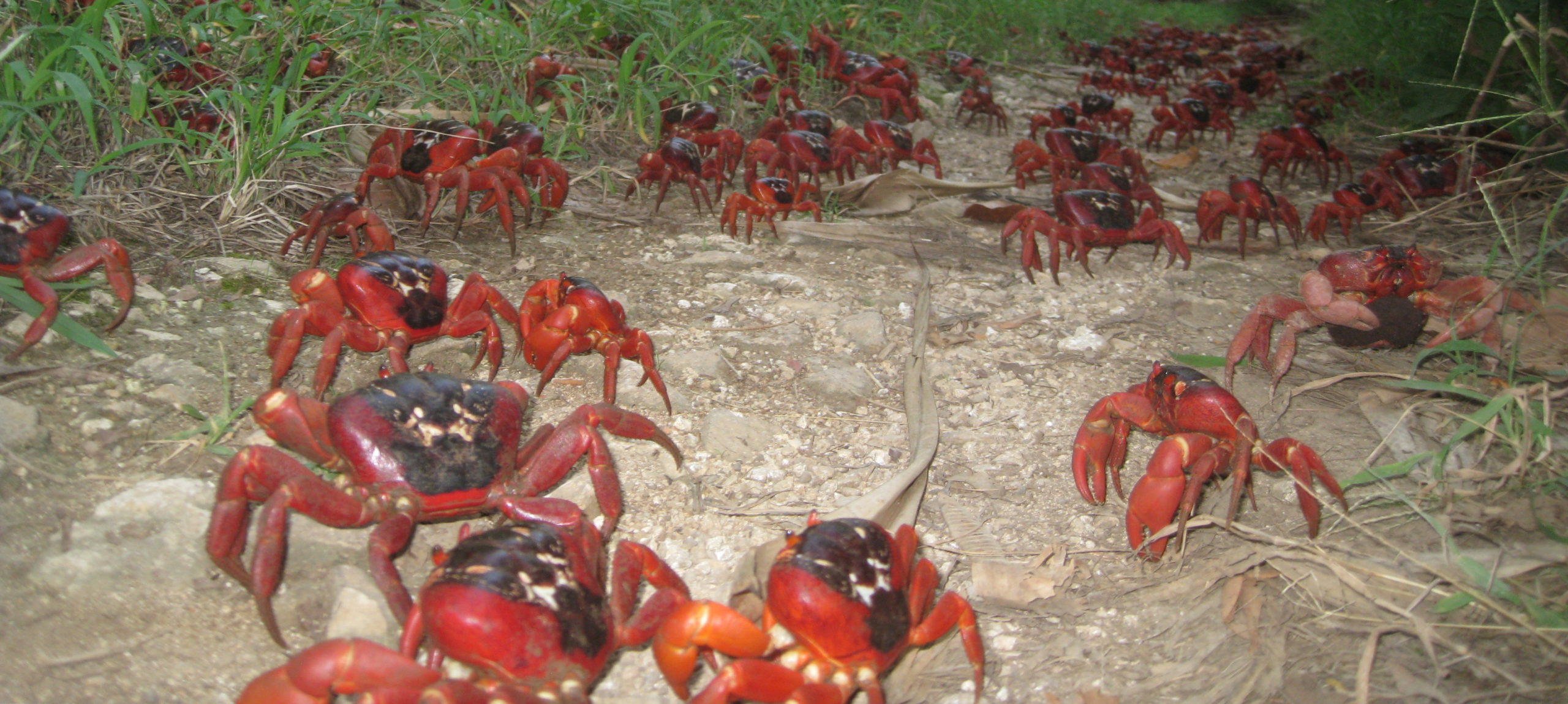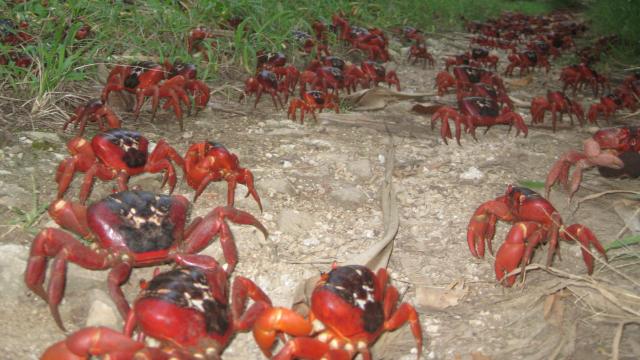Each year, newborn crabs make the perilous trek from the sea shore to the forests of Christmas Island. This year was no exception, as new video taken of the migration makes abundantly clear.
Around a week ago, the baby crabs began to emerge from the Indonesian ocean. Numbering in the millions, and seeming more like a flowing mass of liquid than tiny crustaceans on the march, these crabs are heading inland to find suitable locations to live.
Christmas Island National Park is located about 500km south of Jakarta, Indonesia. The island features two red crab (Gecarcoidea natalis) migration events: Adult crabs leaving the forest en masse for the shoreline to mate, and the resulting baby crabs making their first journey into the island’s interior several months later.
The adult migration is triggered by the coming monsoons, which start in November. Mature red crabs head to the beach in vast numbers, ploughing through any obstacle that dares to get in their way. To offset the risks posed by roads, special bridges have been constructed to corral the crustaceans and provide safe passage.

Image: Ian Usher/Wikimedia
Once at the beach, both the males and females take a dip in the ocean to rehydrate; life in the forest tends to be dry. Breeding requires the cooperation of both the males and females, with the male digging a love burrow for the female. After mating, the males retreat back into the interior, while the females stay behind in the burrows, brooding their eggs. After about two weeks, and when the tides are just right, the females head into the ocean with their mature eggs. After depositing the eggs, the females join their male partners in the forest.
The eggs turn into larvae the moment they’re plopped into the salty sea. They go through multiple larval stages, finally transforming into prawn-like creatures known as megalops. Roughly four weeks later, the megalops leave the sea, molting into baby crabs.
And thus begins one of the most extraordinary sights in nature, as hoards of the baby crabs move inland to find a cosy place to live. The crabs pile on top of each other, cascading off rocks like red waterfalls. From a distance, the migration looks like a giant red carpet, and only a close-up view shows the conglomeration for what it is. Some years, the number of migrating crabs is small. Sometimes there aren’t any at all. This year’s crop, however, was definitely bountiful. It takes about four years for the crabs to reach maturity.
The precise timing of the adult migrations is unpredictable, but it typically happens during the last quarter of the moon in either November or December. The baby crabs usually head for the hills in January (as was the case this year) or February. The island is open to tourists, but park officials make no promises as to the timing of the annual migrations.
[Australian Government, ABC News, Crabs of Christmas Island]
